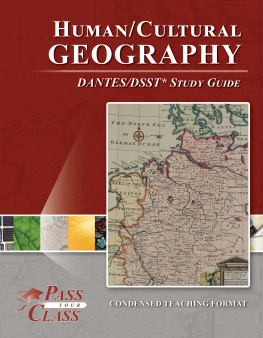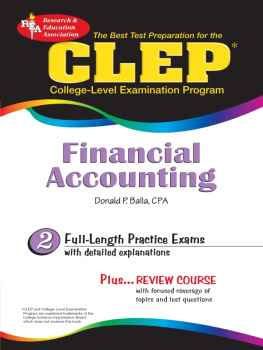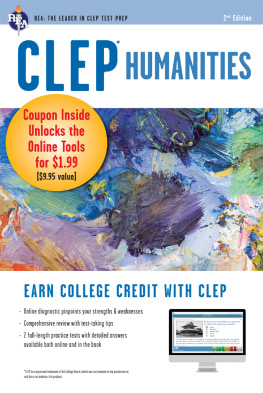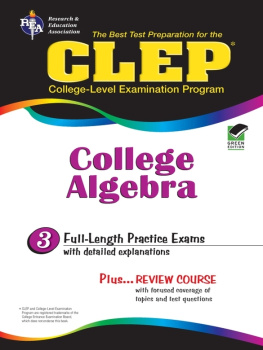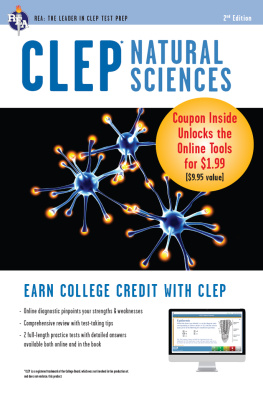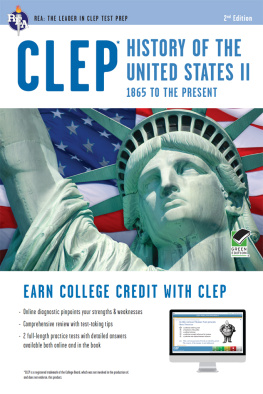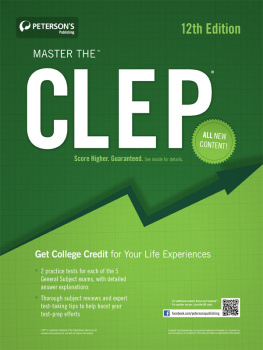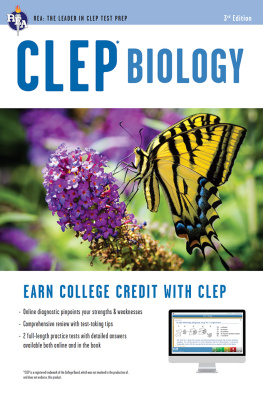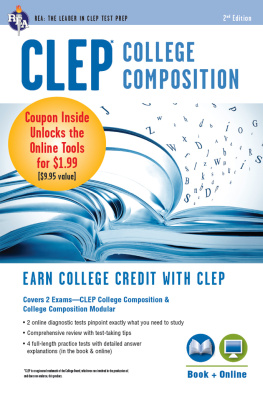Congratulations! Youve bought and are reading the best resource to passing your Biology CLEP test. CLEP tests are a great way to save time and money. If you learn the contents of this study guide and use the flashcards, passing the test should not be an issue. Before you get started though, you should learn what CLEP tests your college accepts for credit. Good luck!

Chemical Composition of Organisms
Simple chemical reactions and bonds
The basic building blocks of organisms are hydrocarbons, compounds with a backbone of carbons covalently bonded to hydrogens and other carbons. Hydrogens can be replaced by functional groups such as the hydroxol group (contains hydrogen and oxygen), carbonyl (carbon double-bonded to oxygen), carboxyl (carbon double-bonded to oxygen and single-bonded to a hydroxyl), amino (nitrogen bonded to two hydrogens), sulfhydryl (carbon bonded to sulfur) or phosphate (phosphorus single-bonded to three oxygens and double-bonded to one oxygen). To make larger molecules called polymers, a hydrogen (H) and a hydroxyl (-OH) group are removed and combine with each other to form a water molecule (HO) in a dehydration synthesis reaction.
Chemical structure of carbohydrates, lipids, proteins, nucleic acids
The four basic groups of polymers or macromolecules are carbohydrates, lipids, proteins, and nucleic acids. Carbohydrates, many of which are sugars, contain carbon, hydrogen, and oxygen in the ratio of 1:2:1. The basic empirical formula for carbohydrates is (CHO) n where n is the number of carbon atoms. Energy is released when a C-H bond is broken. Glucose, a six-carbon sugar in a ring formation, has seven energy-storing C-H bonds. Many glucose polymers found in plants are starches. Glycogen is the animal version of starch. Carbohydrates such as cellulose (in plants) and chitin (in arthropods) are chains of sugars which resist digestion because most organisms lack the needed digestive enzymes.
Lipids are a group of molecules such as fats and oils that are insoluble in water. Phospholipid molecules can be thought of as having a polar head at one end comprised of the phosphate group and two long, non-polar tails at the other end. The tails of such molecules tend to form two rows facing each other, forming the basic framework of biological membranes. Saturated fats have only single bonds between carbons while unsaturated fats have at least one double or triple bond between carbon atoms.
The shape of a protein determines its function. All proteins consist of various sequences of the twenty possible amino acids. An amino acid contains an amino group (NH), a carboxyl group (COOH) and a hydrogen atom bonded to a central carbon atom. Protein structure has six levels: (1) the amino acid sequence, (2) coils and sheets, (3) folds or creases called motifs, (4) the three-dimensional shape, (5) functional units called domains, and (6) individual polypeptide subunits. Proteins facilitate seven basic functions in organisms:
Enzyme catalysis facilitate chemical reactions in the organism
Defense form the basis of the immune system
Transport carry O to tissues and CO away from tissues
Support maintain the shape and protection of the organism (skin, ligaments, bones, hair)
Motion contract muscles
Regulation act as messengers to and from brain, muscles, various systems
Storage bind calcium and iron for later use
The biochemical activities of cells depend on many proteins which have different structures. Cells produce those proteins using the information passed from one generation to the next in nucleic acids of DNA and RNA. DNA (deoxyribonucleic acid) encodes the information used to assemble proteins while RNA (ribonucleic acid) reads the DNA-encoded information and directs the protein synthesis. DNA is a double-stranded helix, but RNA is a single-stranded molecule.
Properties of water
Water has a variety of properties that make it a near-perfect molecule for life. Its most outstanding chemical property is that it forms weak chemical associations known as hydrogen bonds which are responsible for many of its physical properties. This happens because its shape gives it a partial negative charge on the oxygen end and a partial positive charge on the hydrogen end. This polarity allows it to attract other water molecules so that it is cohesive and to attract other polar molecules, creating adhesion. Its cohesiveness contributes to the fact that it is liquid at a relative low temperature. Its high specific heat allows it to store vast amounts of energy in the form of heat. The cohesion of water is responsible for its surface tension. Waters high heat of vaporization allows the surface of a human or animal to cool when sweat evaporates. Water can moderate high temperatures through its high specific heat and its high heat of vaporization. Water is an effective solvent for any molecule having a positive and a negative end. Water is also a very effective buffer in a chemical reaction.
Origin of life
There are three main theories on the origin of life, each with various sub-theories. The main theories are called abiogenesis, cosmozioc, and Supreme being. The abiogenesis theory implies that life has come from some form of non-life. It includes the sub-theories of spontaneous generation, evolution, phylogenesis and the big bang theory. Scientists who believe one of the sub-theories of abiogenesis back their thinking up with thoughts of how life started by the right set of chemicals getting together in the right sequence at the right time in the oceans, in a soup of chemicals, or out of clay and then evolved into worms, then fish, then mammals, and finally man. Those who believe cosmozoic theories have various philosophies as to how man came from space. Some suspect that the building blocks of life came from the cosmos while others think a lower form of life was dropped off on earth. Believers of the Supreme Being theories include Christians who believe God created Adam from clay and his wife Eve from one of Adams ribs as well as Buddhists who believe Buddha created the first man.


